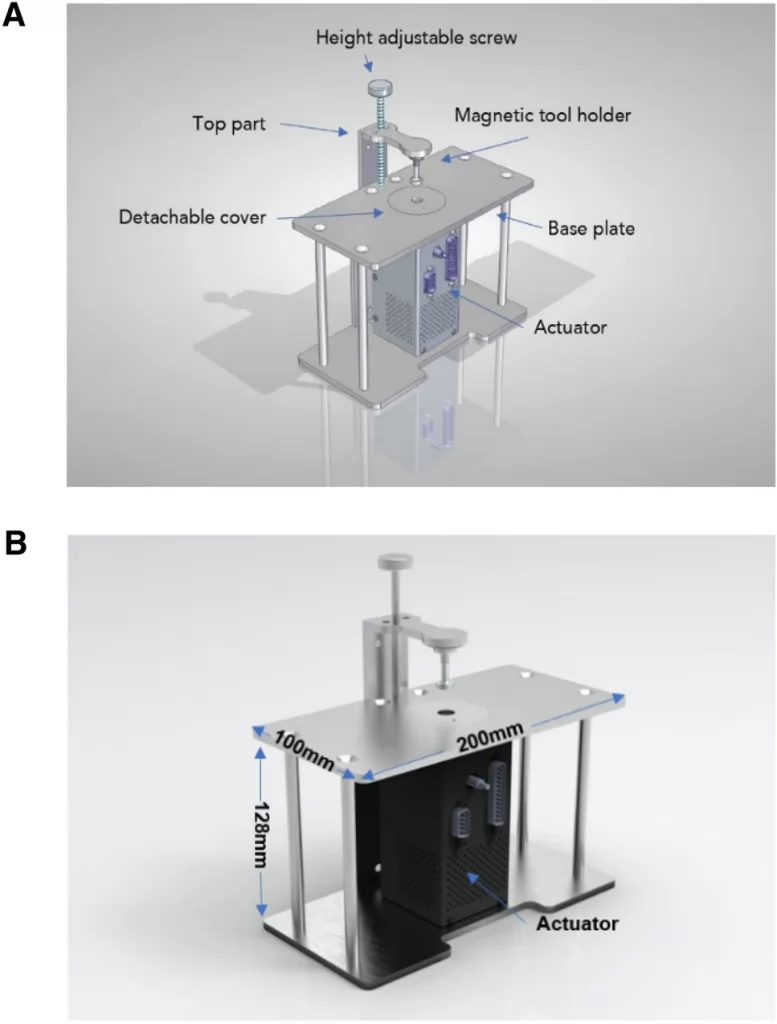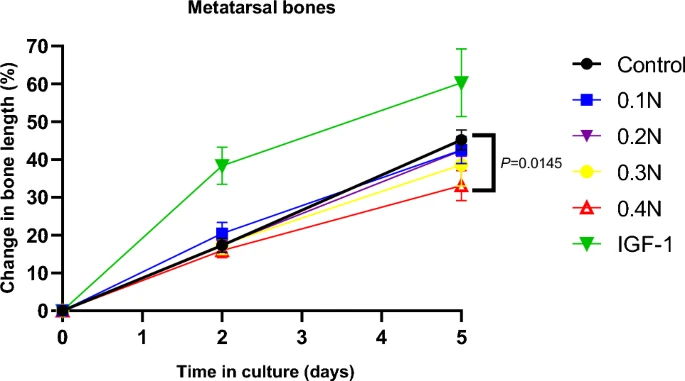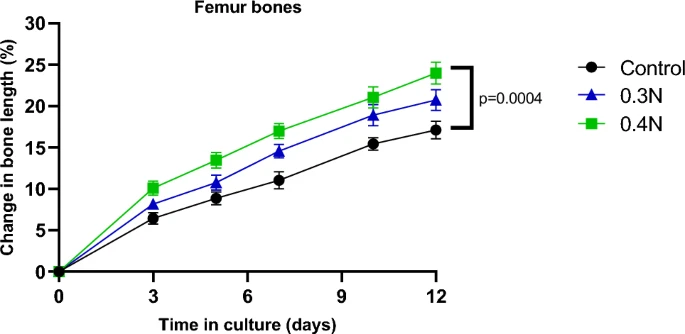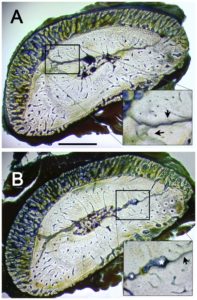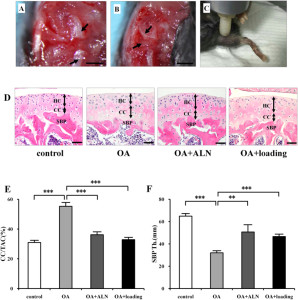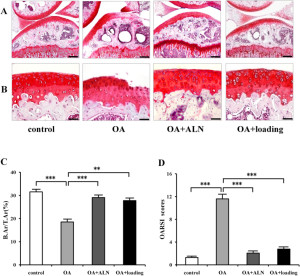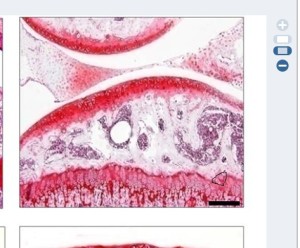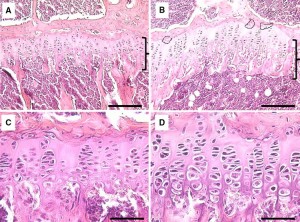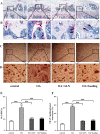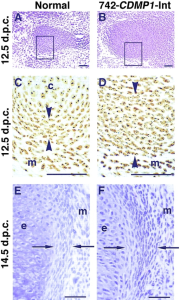I was worried about the future of Lateral Synovial Joint Loading with most of Hiroki Yokota’s new papers being focused on other things but it seems like a researcher by the name of Zengphei Zhang has spoken a lot about the lateral loading technique in a new paper. I don’t know if Zengphei Zhang is related to Ping Zhang who also worked on Lateral Synovial Joint Loading. But that would explain his emphasis on it. However, regardless it is exciting that research is being done in the field. Zengphei Zhang has used a lateral loading device before in this study. He references this manuscript “Mechanical Stimulation: A Non-invasive Treatment Strategy for Leg Length Discrepancy” that might have additional info but I can’t find it.
Effects of mechanical load/stress on bone growth
“Leg length discrepancy (LLD) is a condition characterised by a difference in bone length, where one leg is shorter than the other. Surgical treatments for LLD are often associated with complications such as pain at the surgical site, infection, and delayed bone union. Thus, there is an ultimate need to establish noninvasive approaches to treat LLD. This thesis explores the use of mechanical loading as a potential noninvasive method to treat LLD.”<-It’s very exciting that mechanical loading is being used as a potential method to treat limb lengthening discrepencies. Even if they suspect that mechanical loading works via the growth plate that does not mean that a non-growth plate mediated mechanism does not exist. There are cases of bone growth increasing in length past puberty. Also there is a study which shows that lateral loading can increase longitudinal bone growth in growth plates that are near senescent. Thus, lateral loading could potential reverse growth plate senescence and could potentially awaken growth plates.
“I focused on the creation of a portable, computer-controlled microloading device capable of delivering precise mechanical loading to small bone organs and animals, such as mice. Using this device, we tested the direct effects of mechanical forces on rat embryonic femur and metatarsal bones cultured ex vivo. These results revealed that mechanical loading at 0.4N significantly decreased growth in metatarsal bones (by approximately 1 mm) while significantly increasing growth in femurs (by approximately 4 mm). These findings suggest that the impact of mechanical forces on bone growth appears to be influenced by both the size and unique traits of the bones.” Maybe the device is too large for the smaller metatarsal bones. In which case just making a smaller device would work. It’s possible that loading at a relatively smaller surface area is optimal.
“Study III extended these findings to young mice, where mechanical loading was applied to the joints of one hindlimb (both female and male, 4-week-old and 8-week-old){unfotunately, these mice are pretty young}. Mechanical loading significantly increased femur length, with the most pronounced effects observed in 4-week-old mice of both sexes. Furthermore, we identified PTGS2 (prostaglandin- endoperoxide synthase 2) as a key gene involved in the bone-lengthening effects of mechanical loading. PTGS2 expression was significantly elevated in the CD73+ and PTHrP+ skeletal stem cell niches of the growth plate in treated legs. Pharmacological inhibition of PTGS2 abolished the bone-lengthening effect, confirming its critical role. Furthermore, mechanical loading significantly increased both PTGS2 expression and the size of ex vivo cultured human growth plate cartilage.”

Soft tissue constraints being mentioned also indicates that we could find some way to reduce the soft tissue constraints in order to grow taller.
“the parameters of mechanical load, including load regime (static or dynamic), force level, frequency, orientation (axial or lateral), and age and growth plate direction, are not taken into consideration. “
“Limited studies report the effect of dynamic lateral load on longitudinal bone growth. Zhang’s group, using a customised piezoelectric mechanical loader, applied a sinusoidal force laterally to the mouse knee joint and examined the length of the hind limb two weeks after the last loading. The force was given precisely at 0.5N with 5Hz for 3 min/day, 10 days in total. It was found that dynamic lateral loading increased the femur length by 3.5% and 2.3% when compared to the age-matched control and contralateral non-loaded side, respectively. It was the first study showing that laterally applied dynamic load may enhance longitudinal bone growth. However, there are several limitations of this study, including the absence of data on any gender- or age-specific differences, as well as insufficient mechanistic studies. Similarly, in 8-week-old female mice, the same group investigated the effects of mechanical force and frequency administered for 5 min per day laterally to the elbow joint for 10 days.
They observed that in comparison to the contralateral non-loaded side control and age-matched control, the length of humerus was increased by 1.2%. While a greater increase in ulna length was also observed, with 1.7% and 3.4% growth compared to contralateral control and age-matched control, respectively. Notably, these effects were accompanied by increases in body weight along with bone mineral density and content.”<-this is a direct reference to lateral compressive load to the epiphysis of bone.
One study did find “dynamic axial loading at 5 N of 2 Hz significantly enhanced longitudinal bone growth of tibia bone in mice” but there were other studies that showed growth inhibition due to axial loading.
“The very common belief is that certain sports can alter an individual’s final stature. For example, weightlifting is thought to decrease body height, whereas basketball is believed to increase it. This is probably due to the individual’s biotype, which means tall individuals are more likely to choose to play basketball, while short individuals like to participate in weightlifting. Indeed, a study in gymnasts showed that short stature and delayed puberty are due to selection bias on training period and leg length. Similarly, another study reported that the short stature found in gymnasts is due to selection bias”<-this is the first paper I’ve read that mentions the height basketball correlation.
“Static compressive mechanical load has been reported to diminish the type II collagen (Col 2) expression and type X collagen (Col X) expression in the hypertrophic zone of tibial growth plates in rat”
“Mechanical load plays a vital role in regulating chondrocyte activity within the growth plate, with Piezo ion channels (Piezo1 and Piezo2) are important mechano-transducers which convert mechanical force into electrochemical signals. Notably, Piezo1 and Piezo2 have been found largely to be expressed in the chondrocytes, and it was observed that mechanical stress can cause Ca2+ to flow into chondrocytes through Piezo channels, resulting in cellular apoptosis. Interestingly, the endogenous peptide urocortin, expressed in primary human articular chondrocytes, has been found to block the Piezo1 channel in vitro, which ultimately protects chondrocytes from apoptosis. Further, inactivating Piezo1 in chondrocytes drives a disturbance in endochondral bone formation, which is highly regulated by the growth plate”

The above shows how loading could alter the growth plate. Note that if mechanical loading could impact stem cells it could potentially form new growth plates. Another image of how mechanical loading could modulate longitudinal bone growth:

Here’s a picutre of the device, you can see why it may be too large for smaller bones:

“Mechanical loading significantly enhanced femur length growth in loaded hindlimbs compared to sham-loaded hindlimbs in all mice, regardless of age or sex. The increase in length was consistent at both the 14-day and 28-day time points, with the more prominent effects observed when the load was applied daily rather than every other day.”
“Mechanical loading significantly increased height of the growth plate in the loaded hindlimbs at both 14 and 28 days. A higher number of proliferative and total cells in the growth plate regions with notable differences were also observed at both time points. Additionally, the hypertrophic zone height was significantly greater in loaded limbs, while the size of individual hypertrophic chondrocytes remained unaffected.“<-perhaps lateral loading can also increase the height of the articular cartilage contributing to height that way.
“Mechanical loading of human growth plate cartilage ex vivo resulted in significant increases in growth plate height and cartilage growth after 28 days. The PTGS2 and PIEZO1-positive cell numbers were significantly higher in loaded samples compared to sham-loaded controls, confirming that the mechanisms observed in mice also apply to human growth plate tissues.”<-a common criticism of LSJL is that it has only been shown to work in rats and not humans but this indicates that this scientist believes that lateral loading could work in humans. But this does not yet indicate that Lateral Dynamic Loading will work on adults post skeletal maturity.

